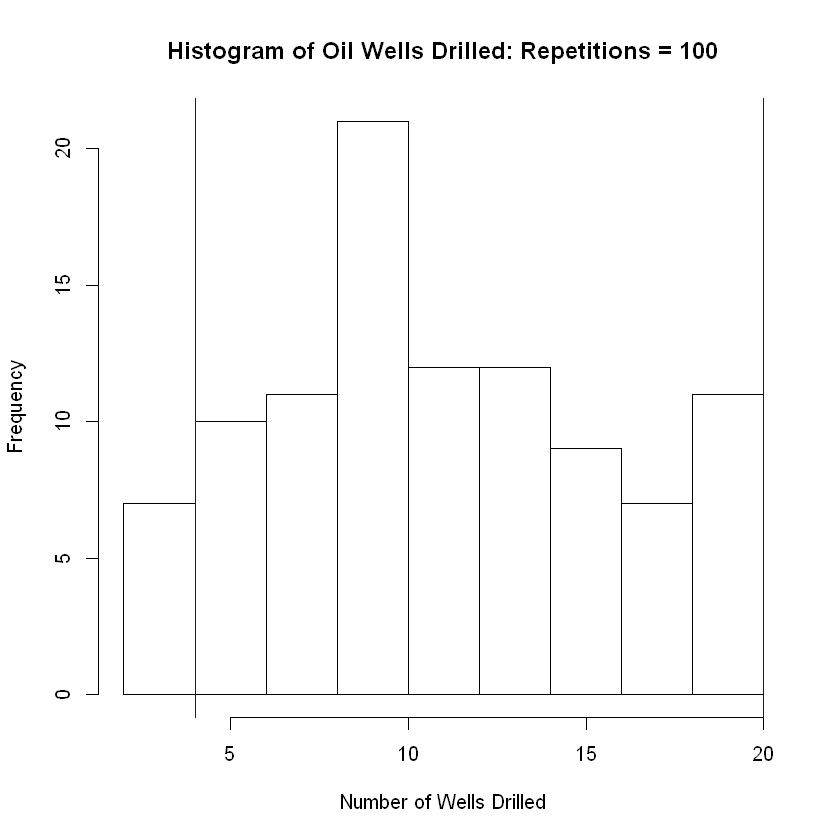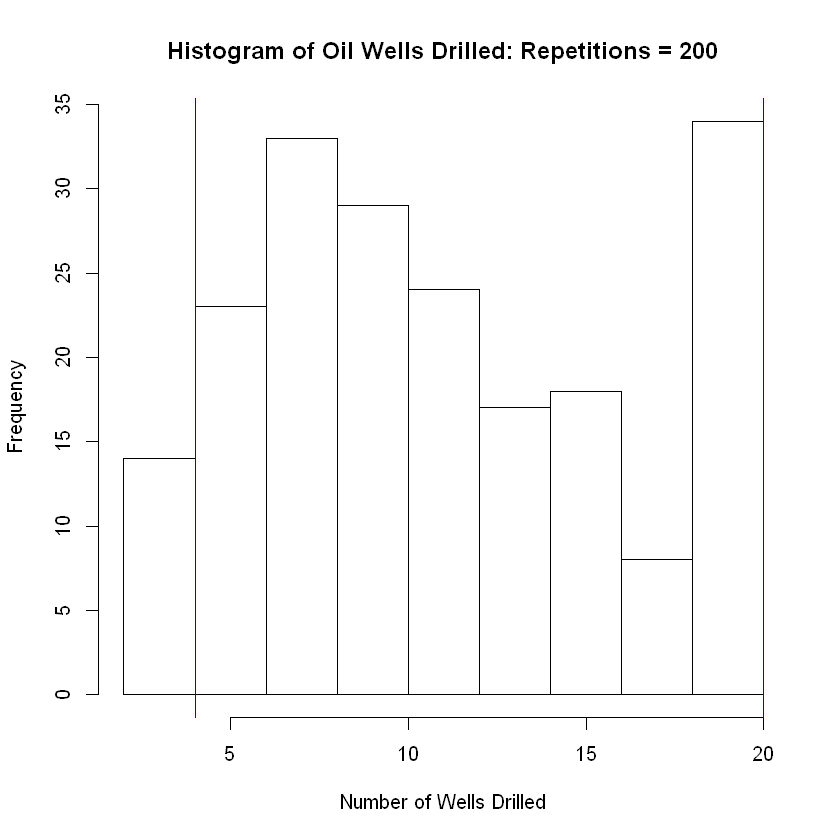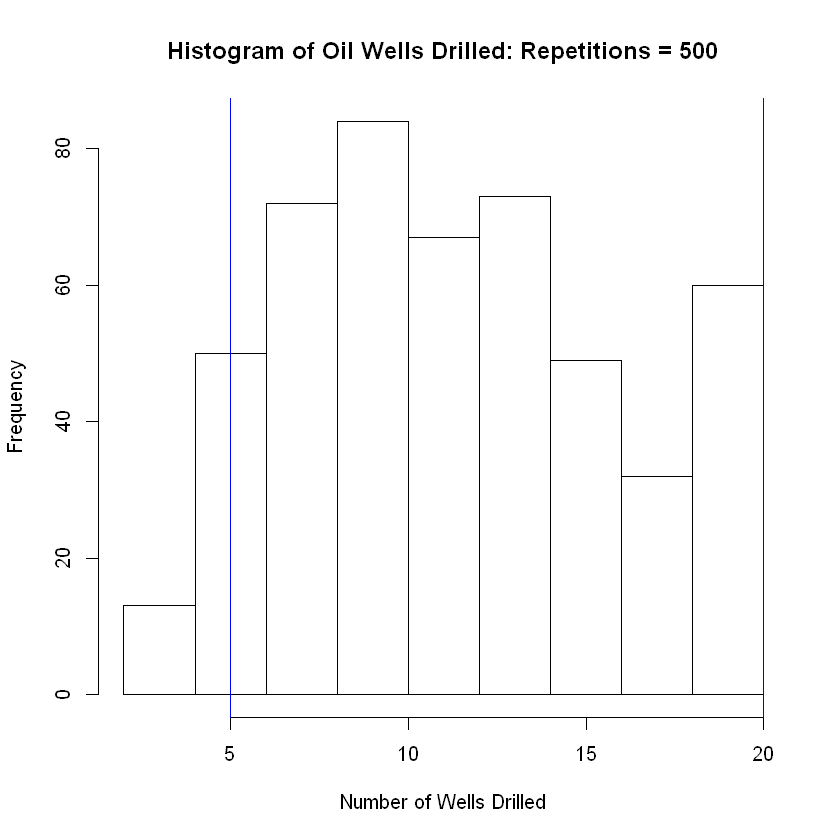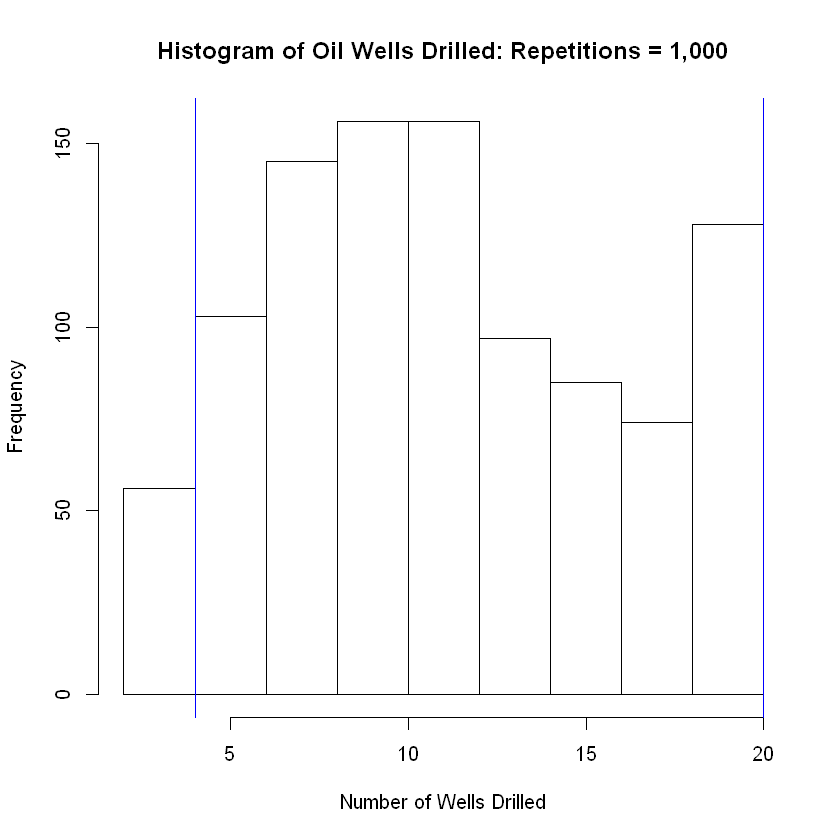Sampling with Negative Binomial Distribution#
Recall the following details of the Negative Binomial Distribution pdf:
Given the following values:
\(n\) indicates the number of trials.
\(k\) indicates the number of successes needed for overall success.
\(p\) indicates the probability of success.
\(q=1-p\) indicates the probability of failure.
\(X\) represents the number of the last well drilled to achieve overall success.
The closed form pdf for a negative binomial distribution is as follows:
The rflip() Function#
We need to be able to use rflip() inside our while loop.
Show code cell source
rflip <- function(n=1, prob=.5, quiet=FALSE, verbose = !quiet, summarize = FALSE,
summarise = summarize) {
if ( ( prob > 1 && is.integer(prob) ) ) {
# swap n and prob
temp <- prob
prob <- n
n <- temp
}
if (summarise) {
heads <- rbinom(1, n, prob)
return(data.frame(n = n, heads = heads, tails = n - heads, prob = prob))
} else {
r <- rbinom(n,1,prob)
result <- c('T','H')[ 1 + r ]
heads <- sum(r)
attr(heads,"n") <- n
attr(heads,"prob") <- prob
attr(heads,"sequence") <- result
attr(heads,"verbose") <- verbose
class(heads) <- 'cointoss'
return(heads)
}
}
The expected value is given below:
Oil fields: 25% chance of successes
k <- 0 # Initialize number of successes index
n <- 0 # Initialize number of total trials needed for success to occur
while (k < 3 && n < 20) {
k <- k + rflip(1, prob = 1/4, summarize = TRUE)[1,2]
n <- n + 1
}
n
Now we can run the for loop with \(k=100\).
num_trials_needed <- c() # create a vector to store the number of trials needed in while loop
num_samps = 100 # set the number of times to run the simulation
for (i in 1:num_samps){
k <- 0 # Initialize number of successes index
n <- 0 # Initialize number of total trials needed for success to occur
while (k < 3 && n < 20) {
k <- k + rflip(1, prob = 1/4, summarize = TRUE)[1,2]
n <- n + 1
}
num_trials_needed[i] <- n # store the number of trials need in this simulation
}
lower <- quantile(num_trials_needed, prob = 0.05) # Calcuate the 5th percentile.
upper <- quantile(num_trials_needed, prob = 0.95) # Calcuate the 95th percentile.
cat('The grand mean of the number of trials needed to achieve success is equal to\n ',mean(num_trials_needed) )
hist(num_trials_needed, breaks = 8, main = 'Histogram of Oil Wells Drilled: Repetitions = 100', xlab = 'Number of Wells Drilled')
abline( v = lower, col="blue") # Add vertical line at 5th percentile
abline(v = upper, col="blue") # Add vertical line at 95th percentile
The grand mean of the number of trials needed to achieve success is equal to
11.38

This table summarizes the investigation to include five examples from the sampling distribution of Drawing a Spades hand:
| Max Number of Wells Drilled | p = 1/4 | E(X) | Simulation Grand Mean |
|---|---|---|---|
| 100 | 0.25 | 12 | 11.77 |
| 200 | 0.25 | 12 | 11.865 |
| 500 | 0.25 | 12 | 11.68 |
| 1,000 | 0.25 | 12 | 11.569 |




